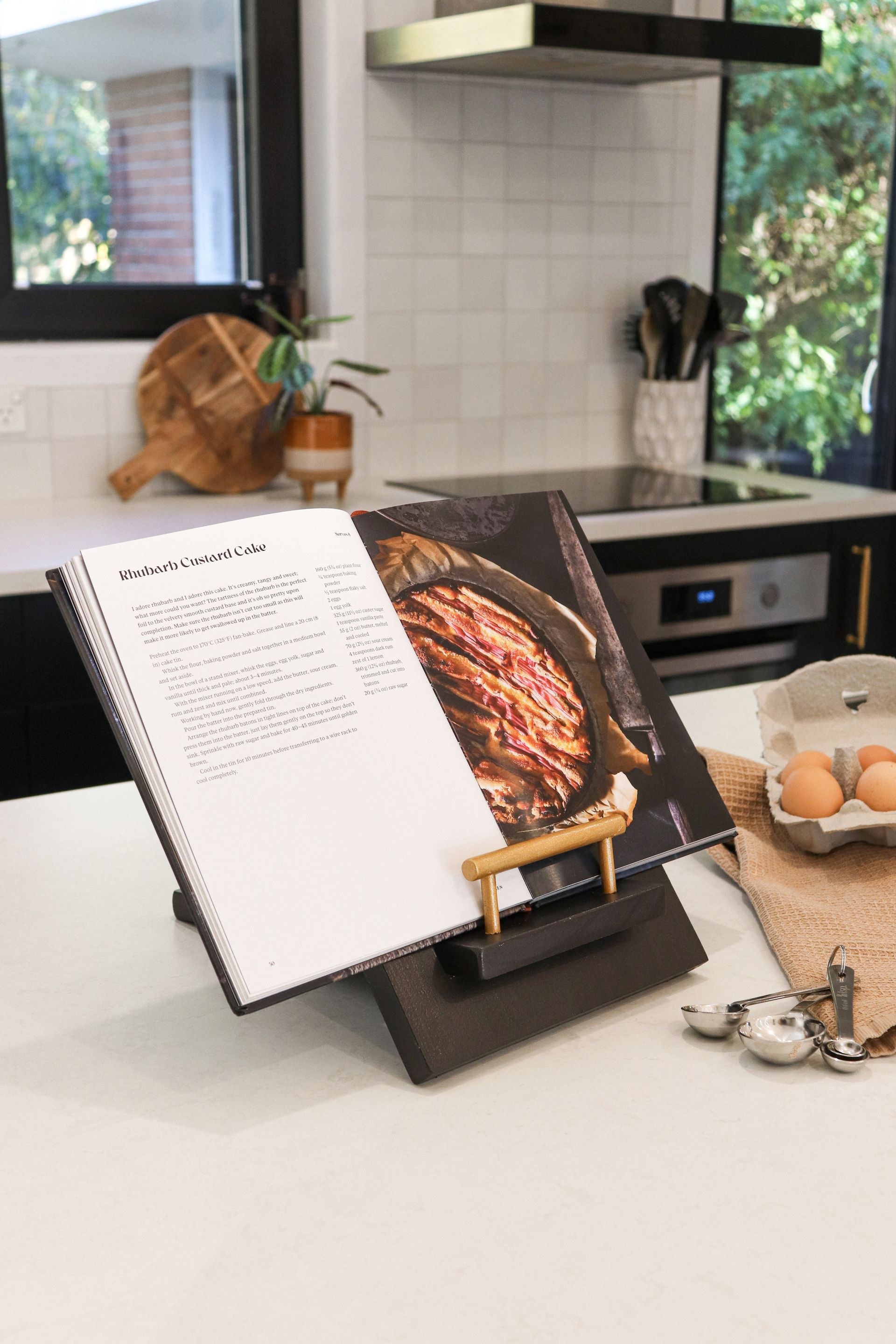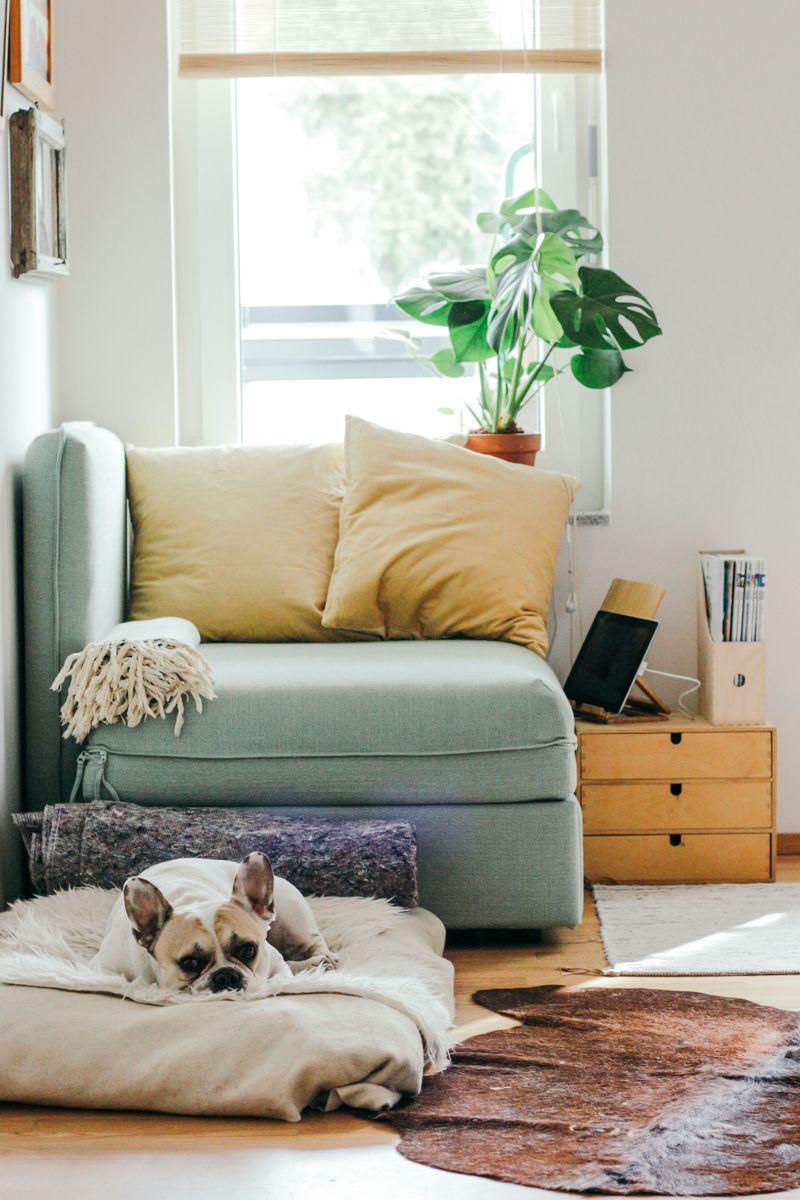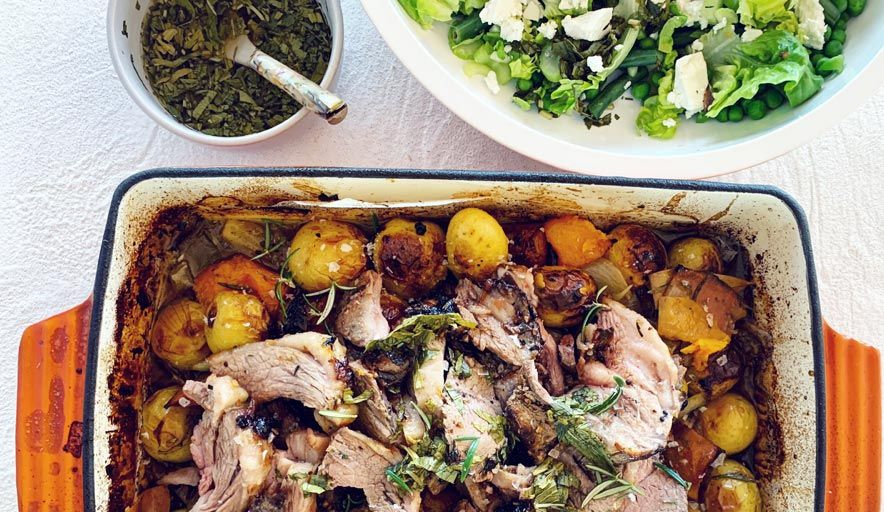Inspiring us to cook smart, not hard, Sam Parish turns her hand to some of our favourite family dishes – all designed to be perfectly paired with those you love, a generous tipple and a cosy dining table.
The Greenest Curry
1 x 400 ml can coconut milk
1 x 400 ml can coconut cream
½ pineapple, chopped into bite-size pieces
8 chicken thigh fillets
2 tbsp fish sauce
1 tsp ground white pepper
1 zucchini, sliced
2 carrots, sliced
½ cauliflower, cut into florets
1 cup spinach
juice of 1 lime, extra wedges to serve
crispy onions and coriander leaves to serve
Curry paste
½ bunch coriander
4–5 shallots/spring onions/long green onions
3 french eschallots
5 garlic cloves
3 cm piece ginger
1 cup baby spinach
2 fresh jalapeños, chopped
1 tsp turmeric
½ tsp cumin powder
½ tsp Kashmiri chilli powder (found at Indian grocers)
¼ cup extra virgin olive oil
1 tbsp heaped crunchy peanut butter
For the curry paste place all ingredients in a blender and whiz until a smooth and bright green paste forms. Transfer to a deep-sided frypan and cook for 3–5 minutes or until beginning to stick to the bottom of the pan. Add the coconut milk, cream and 1 cup (250 ml) of water and stir to combine. Transfer to a slow cooker.
Add pineapple, chicken, fish sauce and white pepper. Cook on high for 3 hours or low for 6 hours. Add the zucchini, carrot, and cauliflower in the final 30 minutes on high, or final hour for low cooking. Stir through spinach and lime juice.
Season to taste then divide between bowls and scatter with crispy onions and coriander leaves. Serve with rice and lime wedges.
Lamb by Sam
Serves 4
1.5 kg lamb leg, slashed
600 g chat potatoes
8 cocktail onions or eschallots, halved and peeled
2 pieces sweet potato, chopped the same size as the chat potatoes
1 litre chicken stock
4 bay leaves
rosemary sprigs
Lamb Marinade
1 tbsp sherry or red wine vinegar
1 tbsp whole seeded mustard
5 garlic cloves finely chopped
1 sprig rosemary finely chopped
1/3 cup (80 ml) olive oil
1½ tbsp honey
1 tsp salt flakes
1 tsp cracked black pepper
Mint Sauce
¼ cup sherry vinegar or red wine vinegar
1 tsp caster sugar
½ cup mint leaves chopped
2 tbsp water
Crunchy Green Salad
100 g green beans
1 cup frozen peas
1 cos lettuce
2 celery sticks
100 g marinated feta
1 tbsp oil
Combine all marinade ingredients together in a bowl. Pour over lamb in a roasting tray and marinate for at least 1 hour or even better overnight!
Place potatoes, onion and sweet potato in a stockpot and cover with stock. Top up with water to just cover and add bay leaves and a sprig of rosemary. Bring to the boil and cook for a further 15 minutes or until veg is cooked through. Drain into a saucepan reserving the stock. Add veg to the roasting tray with 1 cup of stock (freeze or chill remaining for another recipe) and toss in excess marinade from the lamb.
All of the above can be done the day before!! I like to cover and transfer my prepared roasting tray to the fridge at this stage and leave it overnight. Then pull it out for 1 hour before roasting.
Arrange racks so you have one on the bottom and one on the centre rung of the oven. Preheat your oven to 200°C. Place lamb leg onto the middle rack and the roasting tray of vegetables underneath to catch all the excess cooking juices. Roast for 1 hour and 10 minutes, adding an extra 15 minutes per 500 g of extra meat.
Remove meat from the oven and stand for 15 minutes to rest before carving. Keep veg cooking until ready to serve.
Meanwhile, for the mint sauce combine all ingredients in a bowl and stand to infuse.
For the salad, cover beans and peas with just-boiled water from the kettle and stand for 5 minutes to soften. Drain and refresh under cold water. Toss in a bowl with cos, celery, feta, oil and 2 tbsp of the mint sauce mixture. Season to taste.
Carve the lamb and return to hot roasted vegetables. Serve with mint sauce and crunchy green salad alongside.
Recent stories





